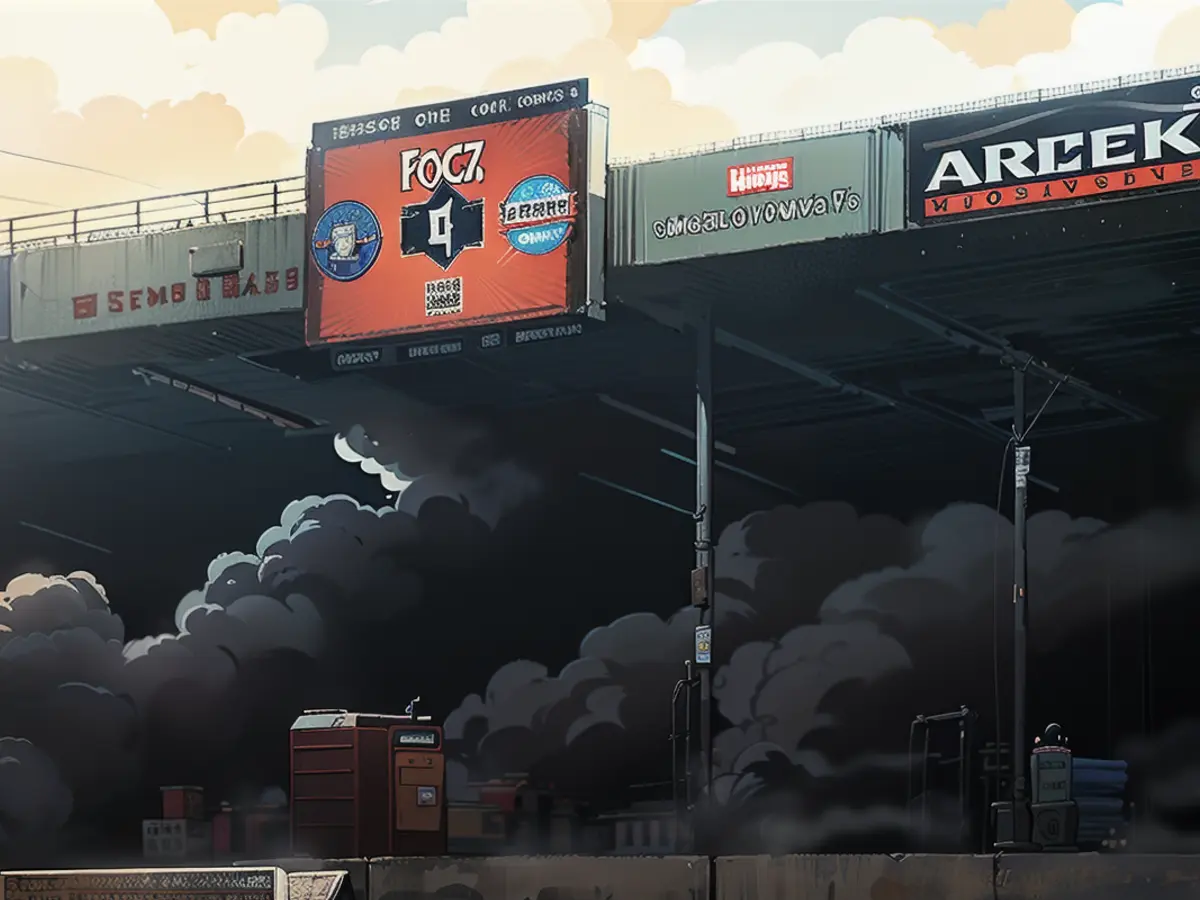Children playing foosball in Gaza may have been killed by an Israeli-fired precision-guided munition, experts note.
The devastated and crying mother, Awda Talla, can't fathom that her only daughter will never return home. A video showing the effects of the attack that took her life showed Shahed lying on the ground next to her friends; her pink pants were difficult to ignore.
"There is no Shahed now," Awda Talla told CNN, her voice trembling. "Every time she came in, she said, 'Mom.' I would respond with ‘My soul, my soul,'" she wept. "My soul is gone."
In the two weeks since the attack, the Israeli military's statements have changed but didn't acknowledge responsibility for the strike that ended in Shahed's death and the death of 10 other children.
An examination of the attack location, thoroughly documented by a freelance journalist for CNN in Gaza, reveals a very different story than the Israeli military's claims. Three munitions experts who examined videos and images of the damage caused by the strike and the leftover shrapnel drew the same conclusion: a precision-guided munition fired by the Israeli military most likely caused the mayhem.
Chris Cobb-Smith, a former British Army officer with expertise in munitions, who has experience investigating weapons used in Gaza by Israel, stated that, based on the available imagery of the aftermath, the attack was "absolutely" caused by a precision-guided missile fired by an Israeli drone.
"It's certainly a small missile fired by UAV – by a drone," he explained. "There's a certain aspect of this particular missile, which is very evident – it's clearly a munition with devastating consequences."
The missile landed close to Shahed and her friends next to the foosball table. With such proximity, their deaths were a certainty.
CNN collected fragments from the scene left by Shahed's uncle, including what appeared to be a part of a circuit board. The strike created a tiny crater on the road, and images from the area indicated surrounding buildings were marked with tiny pockmarks. Weapons experts said these tiny holes were indicative of fragmentation caused by a sophisticated missile.
Chris Lincoln-Jones, a former British military officer and expert in drone warfare, told CNN that the circuit board recovered from the scene was key to discerning the munition's nature. In contrast to shells, which have few electronic components, a circuit board signaled a sophisticated, precision-guided ordnance had been used.
N.R. Jenzen-Jones, a munition specialist and director of the research firm Armament Research Services (ARES), noted, "The remnants strongly suggest a guided munition, most likely a guided missile or loitering munition." However, he added that he couldn't definitively identify the specific type of weapon from the fragments.
Cobb-Smith believed there was no doubt that an Israeli munition was used in the strike, noting, "Palestinian militants do not have anything with this amount of sophistication in their arsenal."
The Israeli military constantly monitors the Gaza Strip, and weapons experts interviewed by CNN said this type of missile would not have been fired without first assessing the area, raising questions about how the decision to strike was made.
There has been an increasing level of scrutiny on the Israeli military's chain of command, particularly in light of an investigation by +972 Magazine and Local Call into the military's use of artificial intelligence to evaluate and approve bombing targets.
Israeli military's shifting response
CNN has repeatedly asked the Israeli military for details about the strike, which occurred on April 16 around 3:40 p.m., as verified by video evidence.
Two days following the strike, the Israel Defense Forces (IDF) claimed they hit a "terror target" in Al-Maghazi without giving any supplementary information. An IDF spokesperson mentioned that they were unaware of the number of casualties but that the incident was being investigated and that the military was attempting to find the strike in their records.
Two weeks later, and three days after CNN published an analysis of the strike that killed the kids, the Israeli military denounced having any knowledge of the incident:
"The strike in question was carried out at a different time than described in the query, and was approved based on an accurate intelligence indication," the Israeli military statement claimed. "The collateral damage as described in the query is not known to the IDF."
However, Palestinian journalists reporting in Al-Maghazi confirmed there was no other strikes that day. Recorded videos from two different iPhones taken immediately following the incident were timestamped at 3:40 p.m., which was the time provided to the IDF.
The Israeli military declined to provide any further proof to support their claims. They also didn't answer any questions regarding the nature of the target or if any militants were killed.
The persisting fear among children
One week following the strike, children resumed playing at the foosball table where Shahed and other children were killed.
However, they were still scared.
"When the attack occurred, I was on my way to play," Mahmoud Beha Abdel Lattif recalled, still shaken by the memory. "Sleep doesn't come easily. I always think about what happened here. I can't sleep well; I'm continually afraid to sleep."
Sama, one of Shahed's friends, was with her when she was killed — she managed to avoid the fate only through thirst.
Sama expressed, "I returned home to hydrate myself when the strike occurred." She wore a necklace beaded by Shahed. "I yearn for her greatly." Unfortunately, not everyone shared her fortune.
For close to 16 days, Ahmed Abu Jayyab, aged 8, clung to life in a hospital bed at Al-Aqsa Martyr's hospital, afflicted with a fractured skull and hemorrhaging in his brain. On Thursday morning, he breathed his last, joining the ranks of the ten other kids slain by that very strike.

Read also:
- This will change in December
- Dikes withstand water masses so far - Scholz holds out the prospect of help
- Fireworks and parties ring in 2024 - turn of the year overshadowed by conflicts
- Attacks on ships in the Red Sea: shipping companies avoid important trade route
Source: edition.cnn.com








